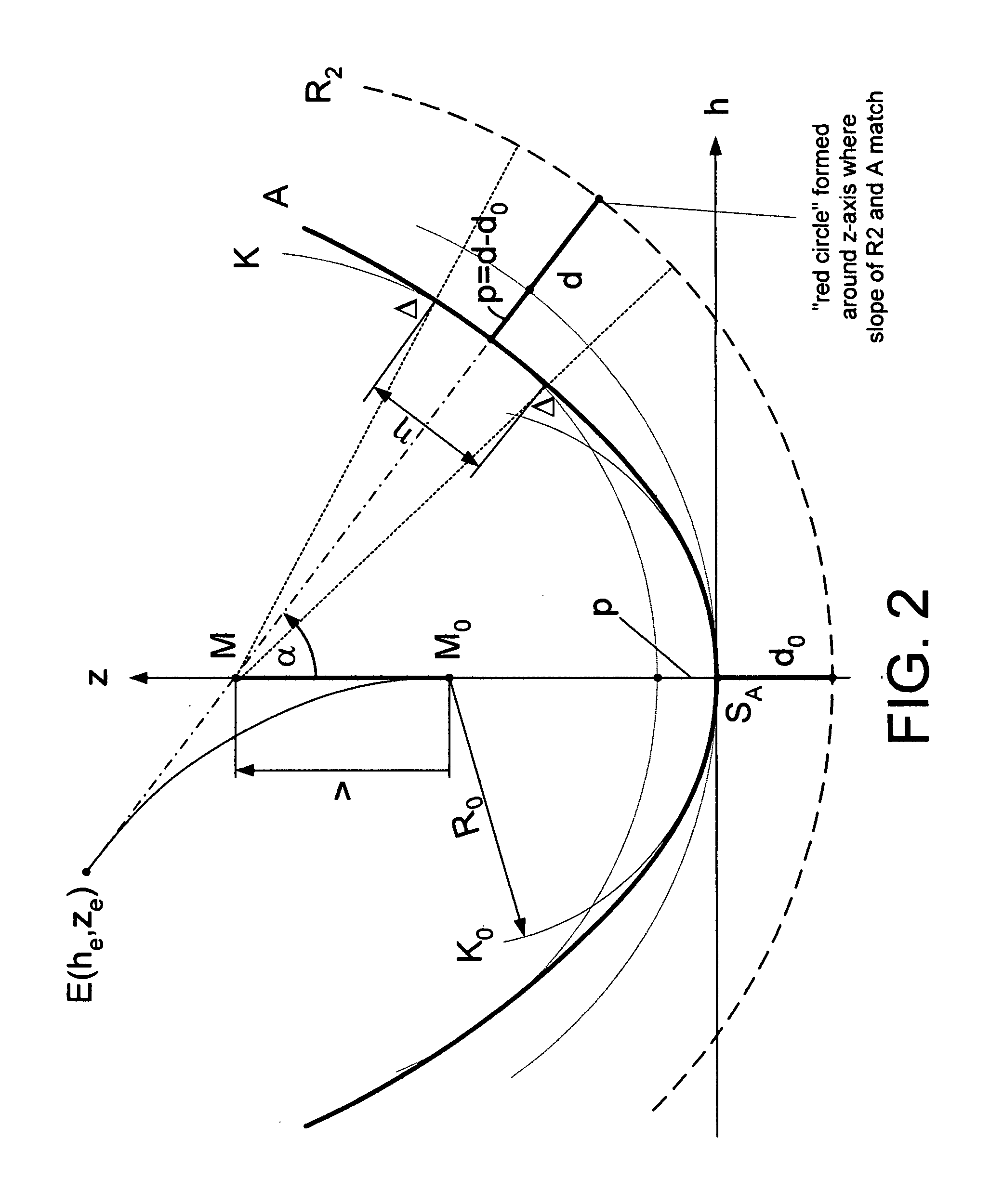Scanning interferometric methods and apparatus for measuring aspheric surfaces and wavefronts
- Summary
- Abstract
- Description
- Claims
- Application Information
AI Technical Summary
Benefits of technology
Problems solved by technology
Method used
Image
Examples
Embodiment Construction
[0069]The present invention relates generally to interferometric apparatus and methods and particularly to interferometric apparatus and associated algorithms by which the shapes of aspheric surfaces and wavefronts can be measured and compared with their designs. To achieve this, the invention utilizes interferometric measurements in object space, where a test surface resides in an interferometric cavity, and their relationships to parameters and detector pixels in image space, where interferograms are imaged on a detector comprising an array of pixels. As a part to be measured is scanned along a scan axis with a known wavefront from the reference surface, the position of the part with respect to reference is interferometrically measured where the local slopes of the reference and part match to generate quantitative information in object space about the axial location of the coordinate of the position where these local slopes match. Along with this information, the vertical location...
PUM
 Login to View More
Login to View More Abstract
Description
Claims
Application Information
 Login to View More
Login to View More - R&D
- Intellectual Property
- Life Sciences
- Materials
- Tech Scout
- Unparalleled Data Quality
- Higher Quality Content
- 60% Fewer Hallucinations
Browse by: Latest US Patents, China's latest patents, Technical Efficacy Thesaurus, Application Domain, Technology Topic, Popular Technical Reports.
© 2025 PatSnap. All rights reserved.Legal|Privacy policy|Modern Slavery Act Transparency Statement|Sitemap|About US| Contact US: help@patsnap.com



